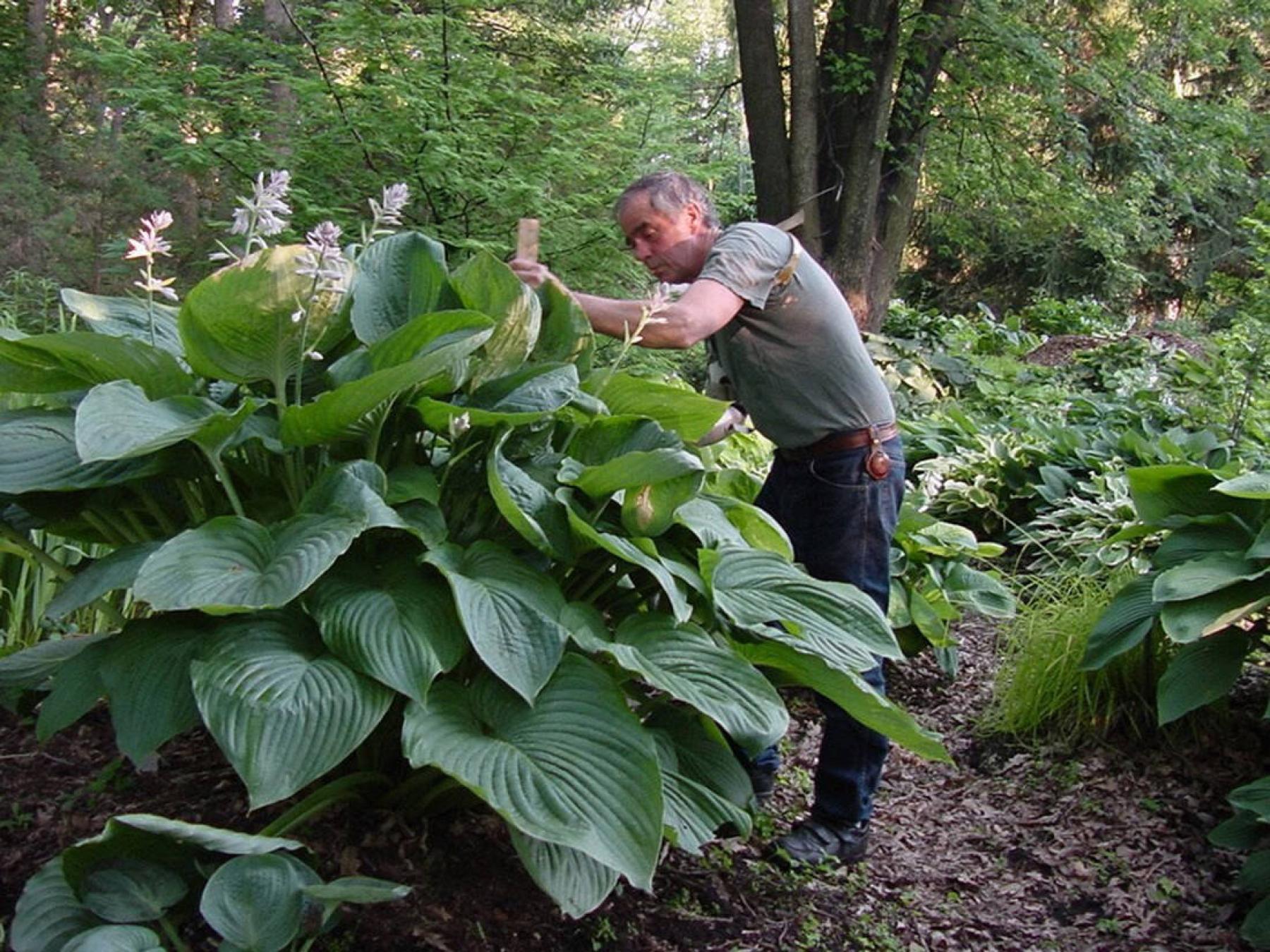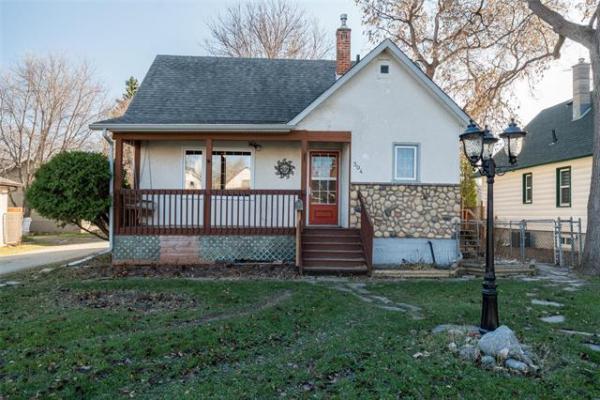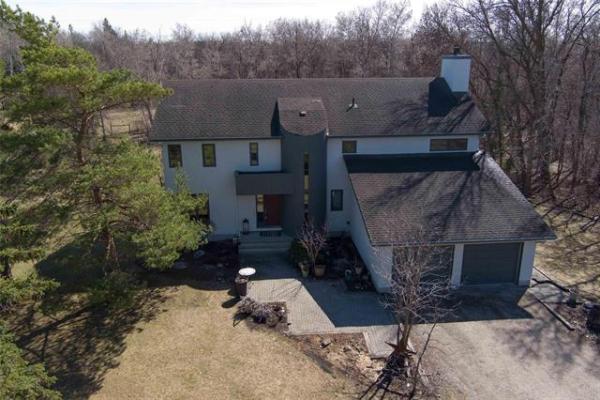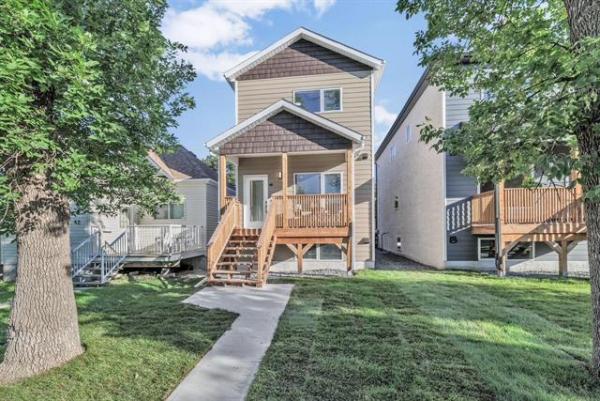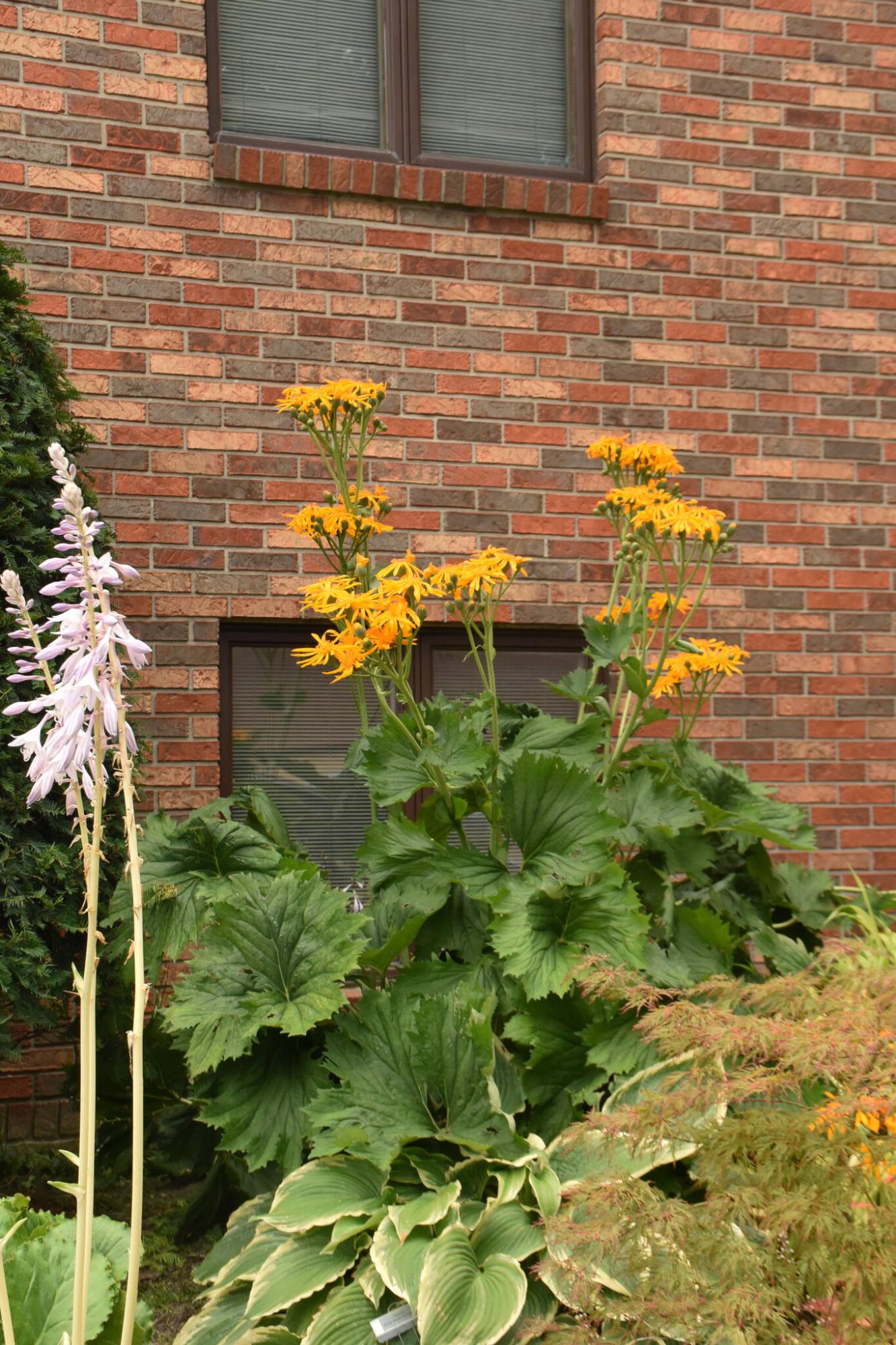
Walters Gardens
With leaves almost as big as a tractor seat, Ligularia Tractor Seat makes a big impression in shade gardens.
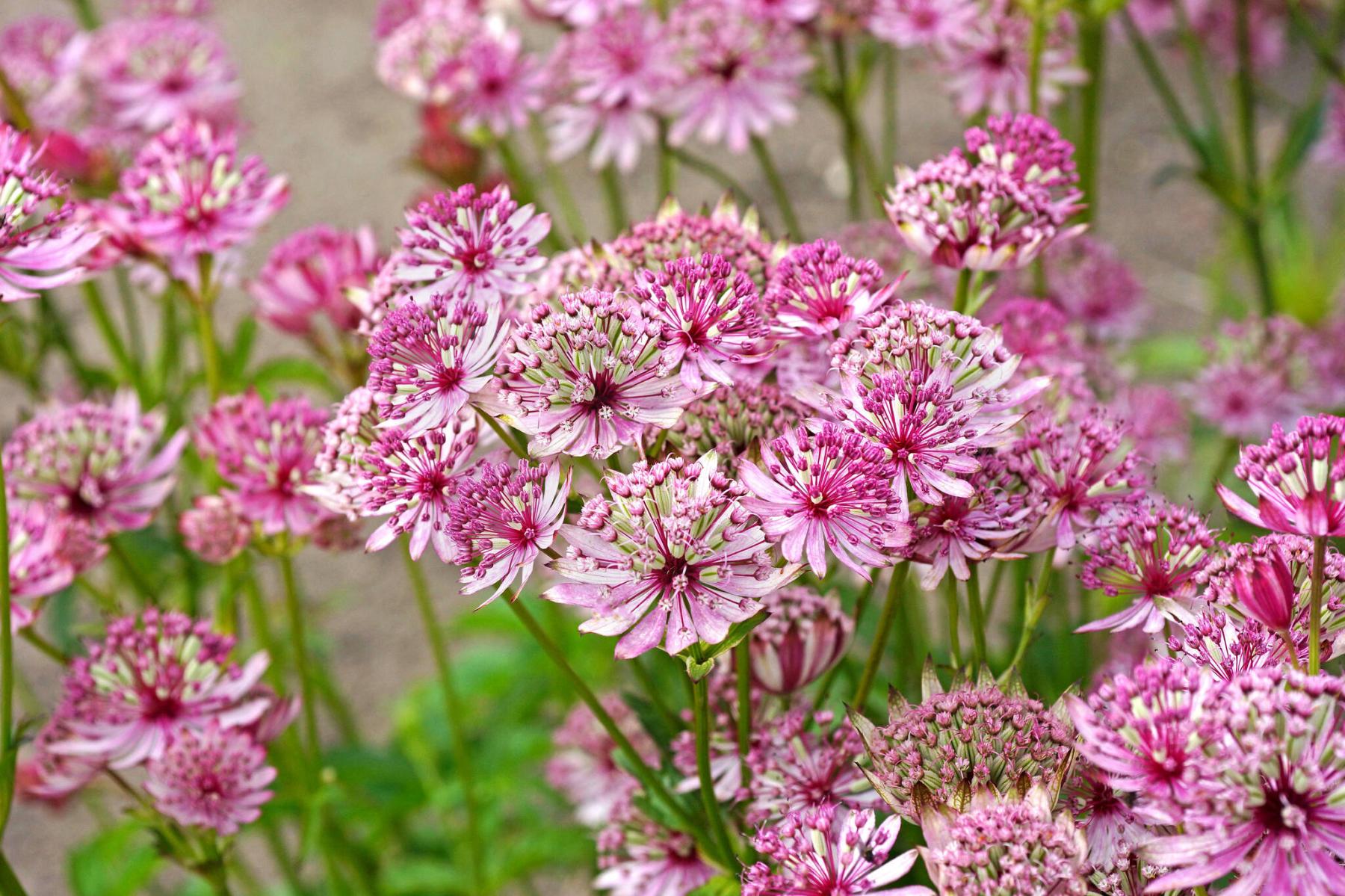
De Vroomen Bulb Canada
Astrantia Sparkling Stars Pink is a fragrant, exquisite study in detail.
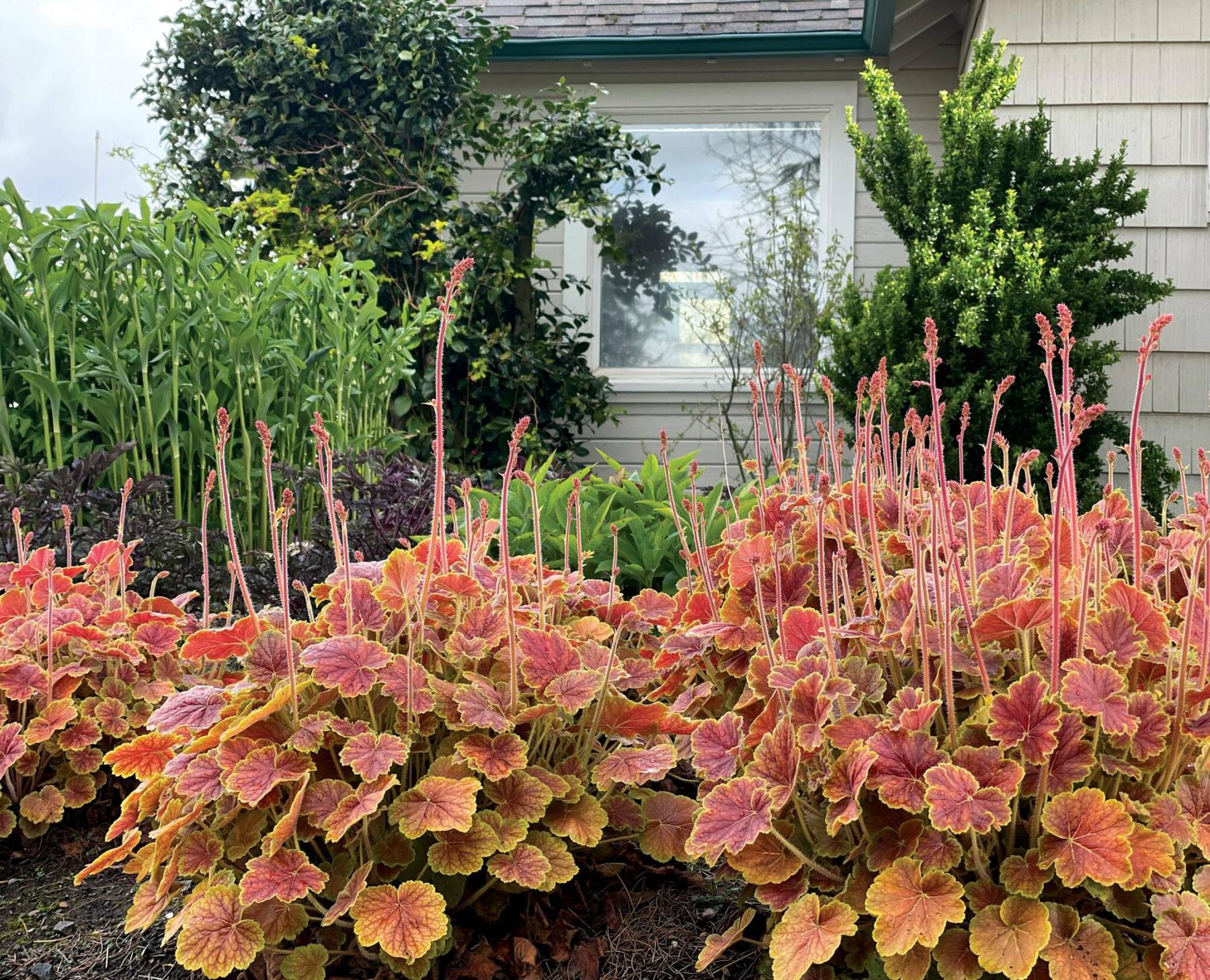
Terra Nova Nurseries
Heuchera Sienna coral bells is one of seven colourful varieties in the hardy Northern Exposure series.
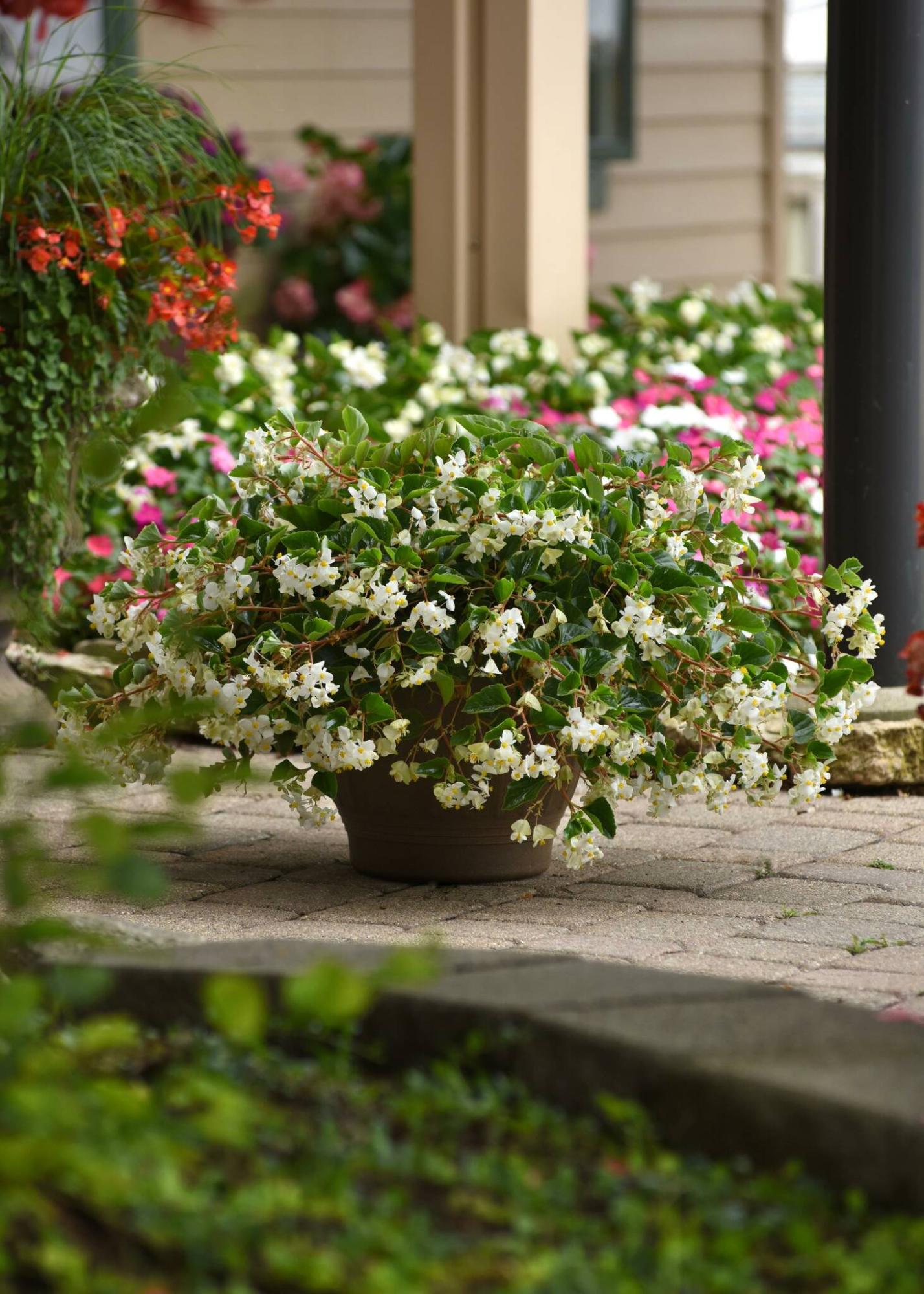
Ball Horticultural
New for 2023, Begonia Hula Blush with an impressive floral spread is made for the shade.
The shadier areas of a garden space offer many opportunities worth capitalizing on. Shifting patterns of light and shadow have a natural allure. We’re often tempted to pour our resources into full-sun areas by investing in a candy-store of shrubs, perennials, vines, and annuals. Yet, where would you rather be on a sweltering hot summer day than in the coolness of a shady area filled with attractive, leafy texture, colour, and fragrance.
Large trees are your best asset in the landscape despite that little problem of thirsty roots that soak up and absorb much of the available water and nutrients in the soil. Achieving a successful and lush underplanting is wholly possible by addressing soil issues with organic amendments. Yearly additions of soil-enhancing leaf mulch or nutrient-rich compost can transform nutrient-depleted soil into fertile, well-drained soil with good aeration.
Think big. Size matters when designing a shade landscape, no matter how small your area might be. Select a specimen plant that will add height as well as distinctive foliage. Ligularia Tractor Seat, new for 2023, is a very large Ligularia with massive deep green leaves that reach 16 inches (40 cm) across at maturity. Tractor Seat is a Ligularia japonica hybrid with large daisy-shaped yellow flowers compared to the tall narrow flower spikes of Ligularia stenocephala The Rocket.
As well, the foliage of Tractor Seat is more deeply dissected. Deer resistant, Tractor Seat Ligularia is suitable for part shade (dappled light, 4-5 hours without direct sun) and requires consistent moisture. One Ligularia is never enough. Contrast Ligularia Tractor Seat with Ligularia Britt-Marie Crawford which has glossy, deep chocolate-purple foliage and golden-orange flowers. Both Tractor Seat and Britt-Marie Crawford grow to a height of 106 cm.
Hosta plants are a staple of the shade garden. Make a statement with the biggest of them all — Shadowland Empress Wu, Proven Winners 2023 Hosta of the Year. At 36-48 inches tall (91-121 cm) and a spread of 60-72 inches (152-182 cm), Empress Wu has thick, gigantic dark green leaves (read slug deterrent) and is suitable for part shade to full shade. The deeply veined leaves can measure more than 1.5 feet (45 cm) in width and length.
If you have the space, Giant Goat’s Beard (Aruncus dioicus) provides a marvellous backdrop in shady gardens. This herbaceous perennial grows rapidly each year to a height of 4 feet (120 cm) or taller and produces large, feathery plumes of creamy-white flowers. Goatsbeard is deer resistant as well as rabbit resistant.
The panicle hydrangea is the most popular type of hydrangea but its most floriferous performance — with adequate water — is in a full sun location (six or more hours of direct sunlight). But I have noticed a distinct difference in the number and size of blooms when a panicle hydrangea is planted in a part shade location. So, if that leaves out the panicle hydrangea, what are we left with?
Annabelle Hydrangea arborescens is a classic beauty in the part-shade garden in evenly moist but well-drained soil, however, her skinny legs need support if she’s going to hold up her 25 cm (10 inch) flower heads in style. One option is to provide plant support to prevent flopping, especially after a heavy rain. One bonus is that a well-designed, solid steel plant support adds architectural detail to the landscape.
But there are other hydrangea options for the shade garden which have strong stems such as Invincibelle Limetta Smooth Hydrangea arborescens and Seaside Serenade Fire Island Hydrangea macrophylla. I purchased these hardy, compact (36 inches or 90 cm) varieties at local garden centres a few years ago and grow them in areas of my garden that receive morning sun and afternoon shade. Limetta’s sturdy stems hold an abundance of viburnum-like flat-topped clusters of flowers with dainty star-shaped florets that are a subdued but elegant green-white colour. Attention-getting Seaside Serenade Fire Island hydrangea, on the other hand, boasts generous mopheads of frilly deep-pink flowers. Both varieties provide a long-lasting display in the shade garden.
Astilbe plants and dwarf Tiny Tortuga Turtlehead are shade loving, deer- and rabbit-resistant perennials that can be used in a double or mixed border for a reliable succession of bloom from early summer to October. Choose astilbe varieties in a range of heights with bloom periods from early summer until late summer. Dark Side of the Moon astilbe, new for 2023, is likely to be in big demand because of its rosy, purple blooms and unique foliage that is deep chocolate brown. But there are many older, inexpensive varieties of astilbe worth snapping up for use in a large grouping. Tiny Tortuga Turtlehead grows to a mature height of 12-16 inches (30-40 cm) and has a bushy habit of growth that makes it ideal for planting as a low hedge. Its flawless foliage on upright stems is dark green with a toothed edge. A profusion of deep pink flowers bloom starting in late August through to October.
Astrantia is an exceptional perennial for the part shade garden. Early to late summer flowering, the clusters of fragrant flowers atop star-like bracts are an intricate study in detail. The distinctive, light green foliage is deeply divided with serrated edges. The slender, branched stems withstand strong winds. Astrantia prefers moist soil. It is deer resistant and is not a favourite of rabbits in my garden. Astrantia prefers moist soil. The flowers are beautiful in fresh or dried arrangements. Astrantia Sparkling Stars Pink has larger flowers than the tiny clusters of some Astrantia varieties. Sparkling Stars Pink grows to a height of 28 inches (70 cm) and would be a captivating plant for a walkway border in your shade garden. There are many types of Astrantia to choose from that have white, pink, or red flowers.
Chartreuse accents brighten shade gardens. Sun King (Aralia cordata) is an indispensable foliage perennial in the part-shade to shade garden with bright golden-yellow to chartreuse heart-shaped leaves. If you don’t already have one, add it to your list but if you do already grow Sun King, plant another. It has a flawless presence in shady spots and is not bothered by pests.
Heuchera coral bells, of course, is a perennial favourite in the part-shade garden. I’ve grown countless varieties over the years but if I could choose only one series, it would be Heuchera Northern Exposure. The series includes seven different colours: Amber, Red, Lime, Black, Sienna, Purple, and Silver. The foliage of Sienna, for example, emerges yellow with orange centres, transitions to solid yellow-green in summer with hints of orange in fall. Bred from hardy Heuchera richardsonii that was sourced from Saskatchewan near Anglin Lake, outside of Prince Albert National Park, the Northern Exposure series is tailor made for northern gardens.
Finally, a container that is overflowing with flowers makes a striking statement in the shade garden. Begonia Hula Blush, a new annual for 2023, grows to a height of 20 cm and has an outstanding 23 inch (60 cm) spread. I grew it last year in my garden. Begonia Hula Blush is made for the shade and looks amazing. It is drought tolerant, water and rain tolerant, and low maintenance.
colleenizacharias@gmail.com

